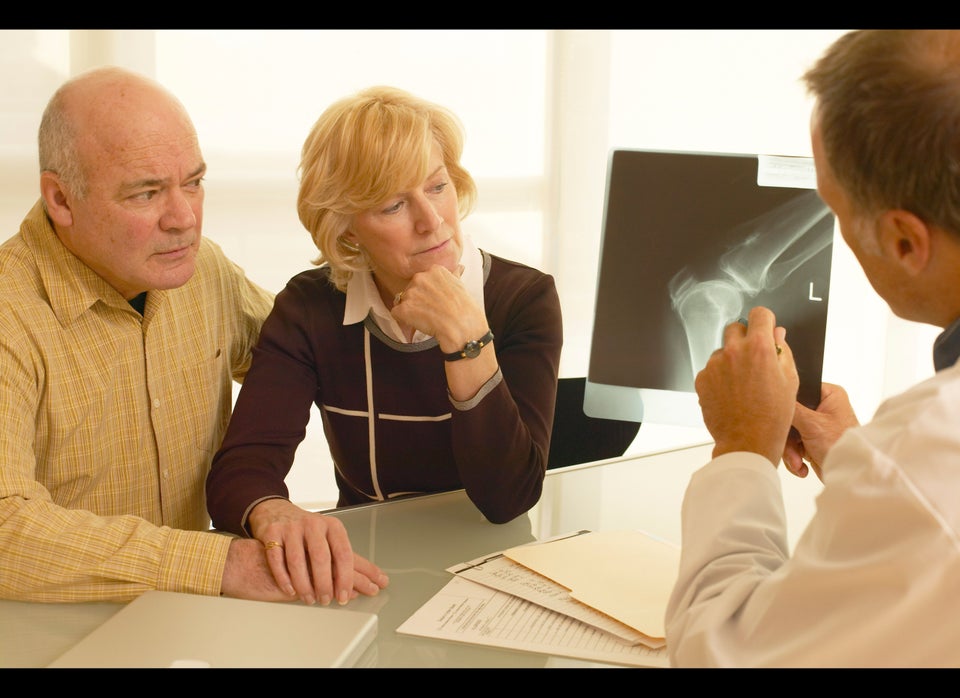While 2016 will be full of unknowns, one thing is certain: each of us will grow older. Luckily, that's not such a bad thing. The year 2016 will be a great year to age, as the mega-trend of population aging continues to drive innovation globally. Here are five reasons why getting older won't be so bad in 2016:
1. The Market Is Responding. In 2016, markets will continue shifting to leverage the economic opportunities of an aging global population, prompted by unprecedented long lives and plummeting birth rates. As we get closer to 2020, when there will be more than one billion people over the age of 60, markets are not sitting on the sidelines.
A few examples. In 2015, Nestle committed to an "aging strategy," investing in SHIELD Centers on every continent to address the skin care needs that will inevitably arise from extended life spans. And it's not just healthcare. Across a variety of industries, the boomer generation is driving market dynamics, from fashion to cinema.
Indeed, even the movies -- once a fortress of youth -- have begun to recognize that the most-valued consumer segment of our society is older adults. Look at all the leading roles for seniors like Robert De Niro, Helen Mirren, Bruce Willis, Lilly Tomlin, and Morgan Freeman. Not to mention all the new releases that feature aging stars, such as The Intern and The Best Exotic Marigold Hotel. Hollywood's foresight will pave the way for further pop culture and consumer products targeted at older adults in 2016.
2. Age-Friendly Cities and Investments. Cities will serve as the pioneers of our aging transformation in 2016. Expect to see WHO Age-Friendly Cities shape metropolises globally, with impacts in the U.S., Europe, China and Japan. Similarly, AARP's Livable Cities Index, launched in December 2015, will not only form a solid basis for happier and more effective living across all ages in American cities, but become an international model for cities' budgets, infrastructure, and social services.
Economically, cities' older citizens will continue to serve as a magnet for business investment, as demonstrated in NYC with the Age-Smart Employers' program and further reflected in the World Economic Forum's globally recognized Age-Friendly Business Principles. The early adopters of these business principles - leaders like Philips, Intel, McGraw Hill Financial, and Home Instead Senior Care - recognize the principles as both a good business investment and a responsible approach to employees in an aging world.
3. Better Health. In 2015, we more fully realized that we must adapt to lives that will last 100 years. Going forward, this intellectual and policy revolution will be led by the WHO, which recognizes that active aging must be built on what they inspirationally call "functional ability."
This theme will carry into 2016's annual World Health Assembly, where we can expect 194 governments to endorse an approach to global health policy based on aging. The WHO will continue to advance essential policies meant to address diseases related to aging, especially the growing burden of Non-Communicable Diseases (NCDs) such as diabetes, CVD, cancer, COPD and, most pressingly, Alzheimer's disease -- a looming global epidemic.
In 2015, we defined "functional ability" as a critical response to the longevity-related deterioration of two billion humans. In 2016, expect for the WHO's aging strategy to begin shaping national policies.
4. It's About the Children. We've made huge progress by agreeing that the most interesting part of this "aging thing" is not the 20th century idea of "old age." Instead, in 2015 we saw that aging demographics is about the children -- and it must become an engine for fiscal sustainability, and even economic growth, in a world where there are more old than young.
Our children's lifespans will likely be much longer than our society has previously seen or accommodated. In adapting to this new reality, we should look to financial service companies like Bank of America, Aegon, McGraw Hill Financial, and BlackRock, which will take giant steps to re-invent how we live and work in an era of longevity. We already know from the Aegon Surveys that our desires, needs, and decisions about if, when and how to retire have fundamentally shifted. Compounding these changes in 2016 and beyond, a study from Bank of America shows that aging has transformed financial preparedness, and therefore financial planning.
5. It's Kind of a Big Deal. In 2016, global economic institutions will further incorporate aging into their strategic agendas. The OECD-Global Coalition on Aging's "Ageing and the Digital Economy" at Oxford University's Harris Manchester College laid the foundation for the OECD 2016 Ministerial on The Digital Economy, so that future digital platforms will include applications for all ages, not just the kids. But it's not only the OECD. Keep a close eye on both the G-7 and G-20, led in 2016 by Japan and China, respectively. Given the economic and social challenges brought by their aging societies, you can be certain the topic is already high on these countries' agendas.
For my money, if Hollywood, the WHO, OECD and leading businesses in finance and healthcare are already embracing the opportunities of longer lives and older populations, 2016 will see great progress for aging -- both for us as a global population and individually.
Earlier on Huff/Post50:

